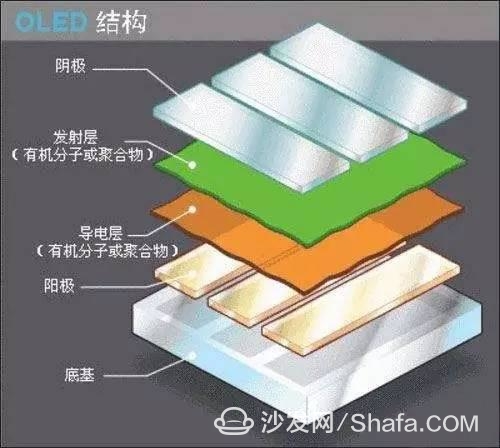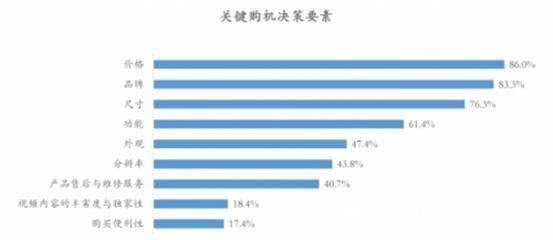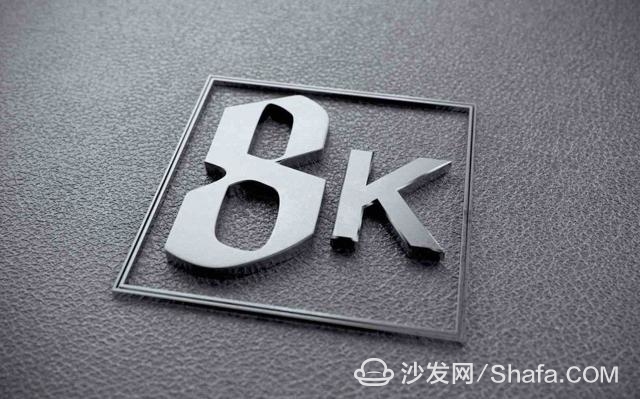The author believes that OLEDs seem to have failed to produce a qualified answer sheet, both in terms of the history of display technology changes and in terms of technology itself and consumer trends. Mature consumers may wish to rationally choose products that have mature supply chains, large sizes, and artificial intelligence that are more in line with current trends in the television industry. Recently, the first consumer-grade 8K TV released by Sharp has attracted the attention of the industry. It emerged from another latitude to provide consumers with new options in display technology. In the same way, this also means that the future display competition represented by OLEDs and quantum dots has ushered in new opponents. Folding three years does not have the ability to carry the future Time is the best touchstone. First of all, from the perspective of historical process, we can see the development prospect of OLED. The full name of OLED is Organic Light-Emitting Diode (organic light-emitting diodes, using a very thin organic material coating and glass substrate, when the current through, these organic materials will emit light. In 2014, OLED has entered the public eye, and the phase Compared to liquid crystal instead of CRT, the OLEDs do not seem to have the power to replace the heavens and to open a new chapter in history. The following set of data seems to be more illustrative of the problem. According to Sino Excell.com data, in 2014, OLED sales in China were 11,000 units, in 2015, 25,000 units, and in 2016 sales were 41,000 units. From January to May 2017, domestic sales were 29,000 units. In stark contrast to this, according to statistics from the Video Industry Association, China’s TV sales totaled 44.61 million units in 2014, increased to 46.74 million units in 2015, and reached 50.89 million units in 2016. However, the share and role played by OLED in it seems to be slightly embarrassing. In contrast, shipments of LCD TVs with more successful supply still have a huge advantage. Low color purity, high power consumption, organic molecules, birth defects are unavoidable As an ordinary consumer, the emergence of new display technologies means a better viewing experience. However, from a technical point of view, while recognizing the excellent performance of OLEDs in terms of flexibility and thinness, the shortcomings such as short life span, residual image, low color purity, and high power consumption are difficult to ignore. First, the unstable organic material coating is the hidden timing of the OLED. Different from the inorganic crystals used in quantum dots, organic molecules are inferior to the luminescent materials in OLEDs in stability, which determines the inherent disadvantages of OLEDs. Its working mechanism will cause the screen current to be unstable, and the current will fluctuate when displaying bright and dark colors, which will affect the product life. Second, due to self-luminous limitations, OLEDs also have the drawback of poor panel brightness. Data shows that the peak brightness of OLED TVs is generally 500 to 600 nits, which is still slightly inferior to LCD. I would like to ask, the so-called future display technology can not allow the screen to have better visual effects in the room during the day, do consumers spend a lot of money to buy a TV, you have to pull the curtains during the day to see it? In addition, OLED TVs are not three-color active light. The current solution is to make a white OLED screen and then filter out two of the three colors with a color filter. However, such a process will result in a three-fold increase in energy consumption. And the price? OLED TVs are twice as many as quantum dot backlight TVs. In view of this, OLED TVs have even worse performance and higher prices. It is no wonder that companies will abandon the development of OLEDs and say "OLED TV is over." Does not meet the market acceptance of large-screen tone Whether a technology launch can achieve subversive effects, consumers' willingness and market acceptance can be used as a measure. From a market point of view, in the case of large-screen televisions in the past two years, due to the complexity of the process, resulting in extremely low yields, OLEDs have not been able to win the right to speak in the big-screen market since their emergence. Source: AVC and Suning Joint Survey Contrary to consumer trends, there is nothing wrong with being accepted by the market and consumers. According to China Yikang's retail monitoring data, in the 51 TV market in 2017, the retail penetration rate of OLED TVs was only 0.6%. In addition, the low yield rate has caused the cost of OLEDs to remain high, making OLEDs only capable of targeting high-end markets. To put aside market acceptance, from the perspective of industry, OLED is also somewhat difficult to support in terms of supporting and scale of the industry chain. From upstream suppliers of organic light-emitting materials to downstream panel manufacturers, their participation is not rich and mature. In the future, if there is no more manufacturers to participate in, OLED is difficult to seize the opportunity of the next generation of display technology. 8K strong attack consumers choose more yuan While experiencing the benefits of new technologies, you must also be prepared to accept the risk of technological iterations. Will consumers be willing to pay for this? On the other hand, mature and transformative trends such as super-large screens, artificial intelligence, and ultra high-definition that have been recognized by the market are also a good choice for consumers. As the main tone of color TV industry in recent years - return to quality, is often mentioned. Quality technology has become the core competitiveness of the evaluation companies and brands, but also brought new vitality to the liquid crystal display. After all, the ultra-fine picture quality that 8K TV brings, in the future, whether it is basic video calls, online shopping or even real-time traffic big data, will break through the limitations of existing technologies and break the real and virtual when communicating with the Internet. The final limit. The display effect is increased from 2K to 4K, and then from 4K to 8K. The visual experience of consumers is constantly being improved. This upgrade is almost irreversible. After all, “the view of the sea is difficult for the waterâ€, after enjoying the beauty of the image details, who will Accept sensory regression? With the upgrading of consumption, the appearance of 8K TV is particularly in line with the ultra-high-definition and high-end market trends, bringing more shocking visual enjoyment to consumers, and at the same time increasing public stickiness to return home entertainment centers. Take the Brazilian Olympic Games for the first time in the 8K event, for example, because the number of 8K video frames is as high as 120 frames, which is twice as much as 4K video, it can help the front-viewers of the TV to more clearly capture the athlete's heroic position on the field. Even splashes in the swimming pool and flying hair in high speed sports. Its immersive feeling can make people better integrate into the program. Create a complete ecosystem to set off an eyeball revolution Recently, Sharp, the industry's "father of the LCD," has launched the first consumer-grade 8K TV with a resolution of 7680×4320. The display effect is 4 times that of 4K (UHD), and it is currently the mainstream high-definition (FHD) resolution. The rate is 16 times. In the context of "50-inch and above TV products, 90% is 4K." Against the backdrop of Sharp's launch of 8K TV, we can see its ancestors' step-by-step technology accumulation and guide the industry's ambition to upgrade. Compared to some future display technologies that have been ridiculed as "semi-finished products," Sharp's launch of 8K TV seems to be more prepared. Collaborated with Foxconn to integrate the content production, editing, storage, and other industrial chains, and horizontally integrate different screen products. With Sharp's announcement of the establishment of the 8K eco-industry, whether it is shooting from the upstream 8K source, or 8K content editing, storage, or final 8K content playback, a complete industrial chain will be formed for the further popularization of 8K TVs. Lay a solid foundation. In addition, according to Dong Wei, vice president of Aowei Cloud Network, there will be 9 generations of 10 generations or more of high generation in 2019, which will promote the explosive growth of 8K TVs. It is expected that the annual output of 8K panels will reach 6 million to 7 million pieces. . It can be said that Sharp's 8K display technology and 8K ecosystem will set off an eyeball revolution. According to data from relevant research institutions, it is expected that LCD TV panels will still dominate the next 5-8 years. With the help of new technologies such as HD and wide color gamut, LCD TVs are ushering in a full-scale upgrade, and 8K TVs will become another possibility for the development of TV in the future. Who says that future display technology can only be produced in OLEDs and quantum dots? After Sharp has created a full-scale industrial chain from content to products, it will not be difficult for consumers to achieve 8K TVs that span 4K and embrace Ultra HD. Suizhou simi intelligent technology development co., LTD , https://www.msmsmart.com





OLED defects difficult to overcome the future display technology who will die?
From CRT to LCD (Liquid Crystal Display), to the rise of OLEDs and Quantum Dots, the debate over the next generation of display technology in TV has never stopped. So what kind of TV is more appropriate for consumers who just need it?